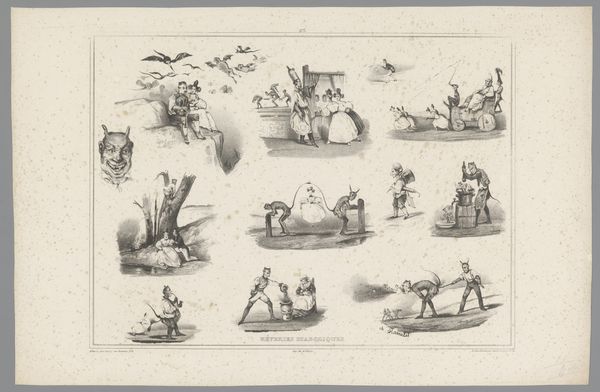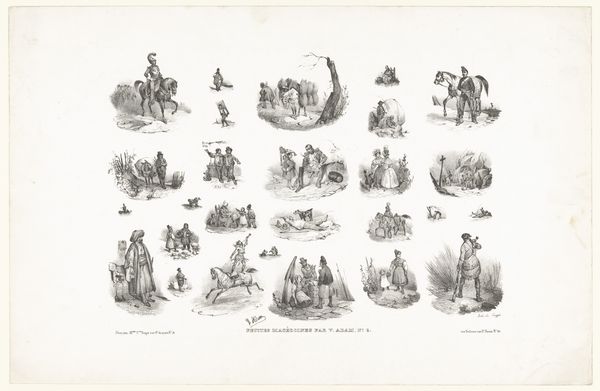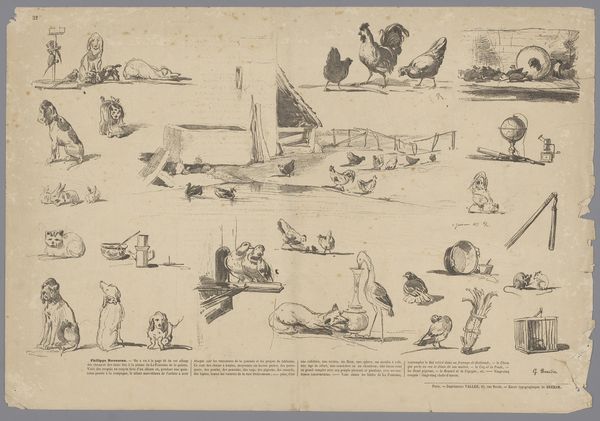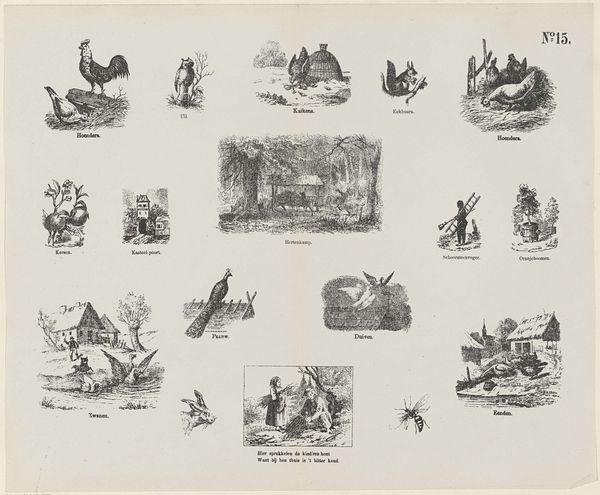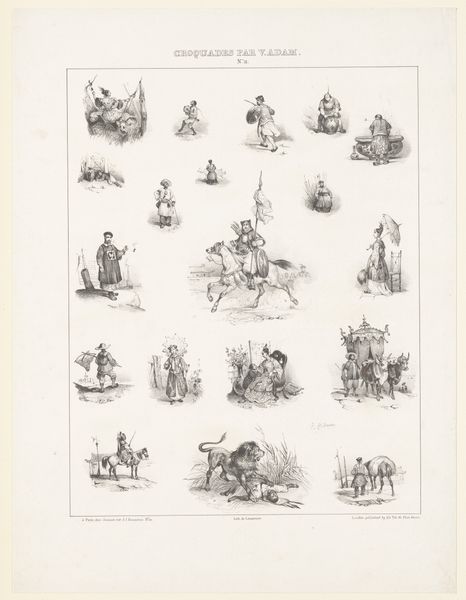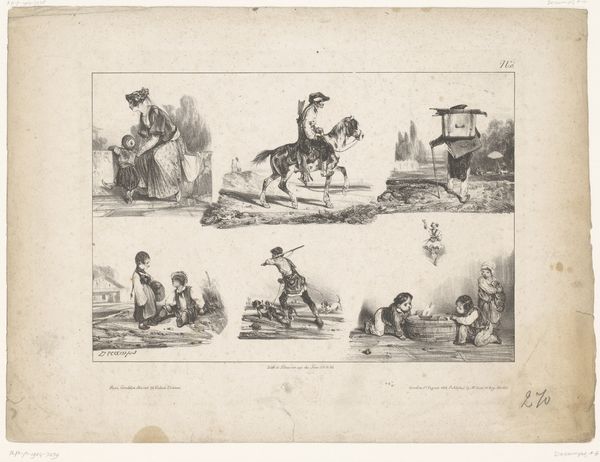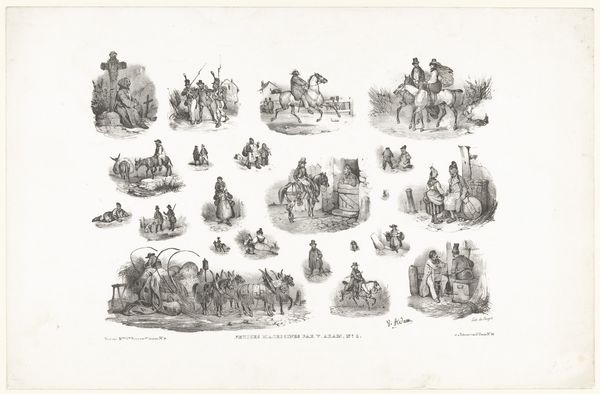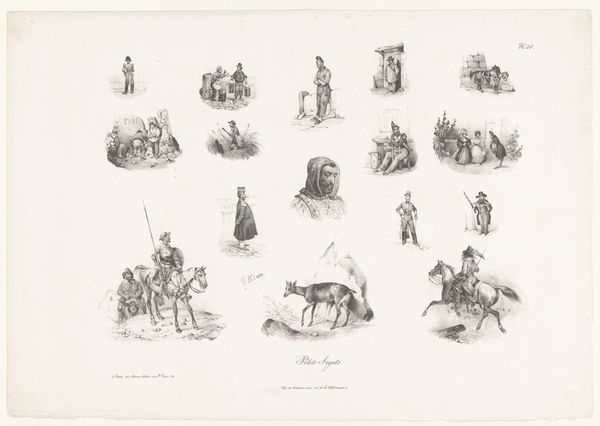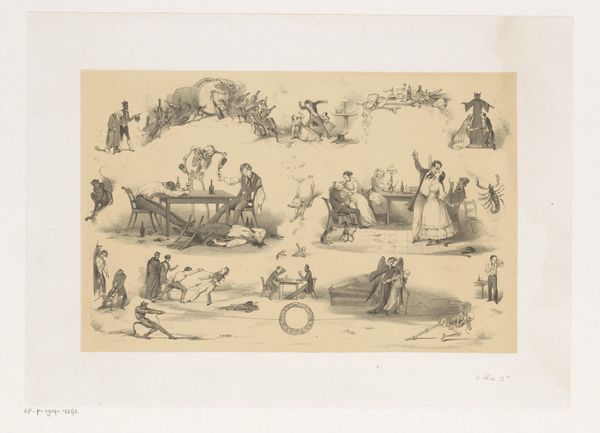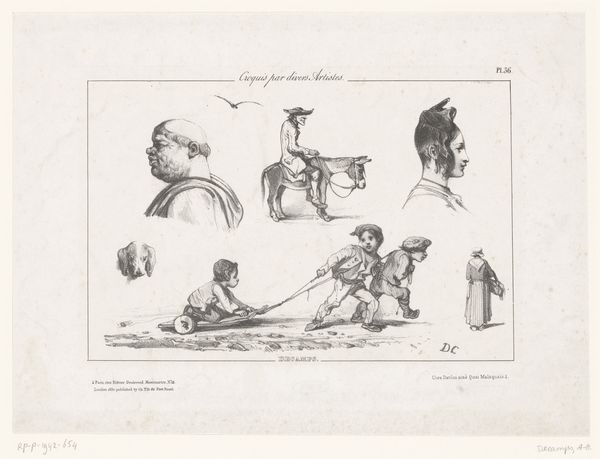
drawing, print, etching, ink
#
drawing
#
allegory
#
narrative-art
# print
#
etching
#
figuration
#
ink
#
romanticism
#
erotic-art
Dimensions: height 362 mm, width 544 mm
Copyright: Rijks Museum: Open Domain
Editor: This etching by Charles Ramelet from 1832, titled "Veertien voorstellingen rond duivels en vrouwen," which translates to "Fourteen scenes around devils and women," is a series of miniature narratives. What strikes me is the almost humorous yet unsettling portrayal of power dynamics here. How do you interpret this work? Curator: It’s interesting you pick up on the power dynamics. Consider the period this was made, a time of shifting social structures and anxieties surrounding gender and morality. Ramelet’s work presents a fascinating, if troubling, lens through which to view these anxieties. Notice how women are often paired with devilish figures. Editor: Yes, there’s definitely a recurring motif there. But what do you make of the variety of scenes, some seemingly domestic, others more overtly fantastical? Curator: This variety allows Ramelet to explore the devil as a metaphor for societal temptations and moral failings, often implicating women. The domestic scenes, in particular, hint at the subversion of traditional roles, a dangerous idea at the time. But I wonder, is Ramelet simply reinforcing patriarchal anxieties, or is there a subtle critique embedded within these scenes? Editor: That's a good question. The absurdity of some of the scenarios makes me think there could be an element of satire. Perhaps Ramelet is highlighting the ridiculousness of these anxieties? Curator: Precisely. And that ambiguity is key. This print becomes a site of negotiation between societal norms and their potential disruption, a reflection of the complex relationship between gender, power, and morality in the 19th century. What seemed a humorous collection of images might reveal the subtle tensions of its period. Editor: Looking at it that way definitely gives me a new perspective, it seems the "fourteen scenes" really offer much to analyze with a new context in mind. Curator: Indeed, it is a powerful demonstration of how artistic expressions have documented socio-cultural evolution.
Comments
No comments
Be the first to comment and join the conversation on the ultimate creative platform.
